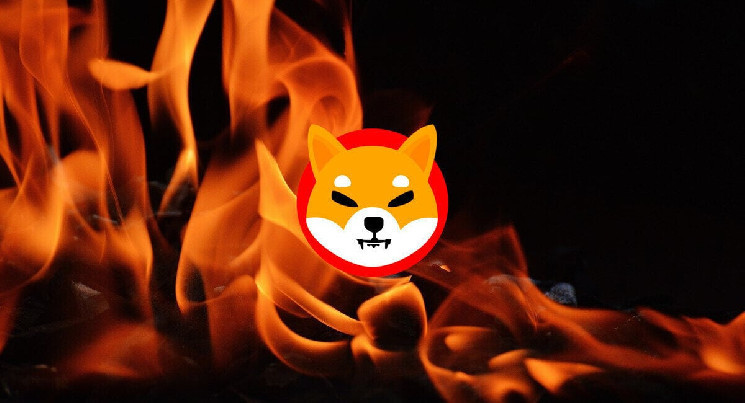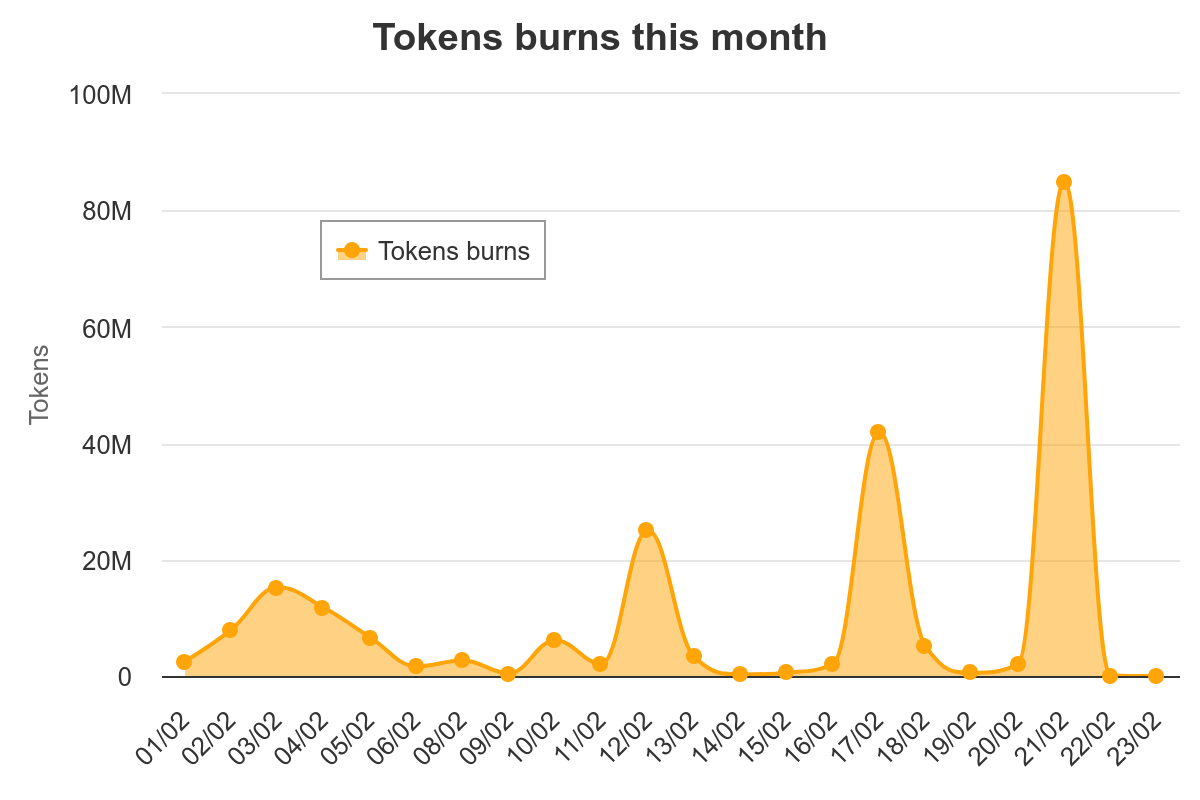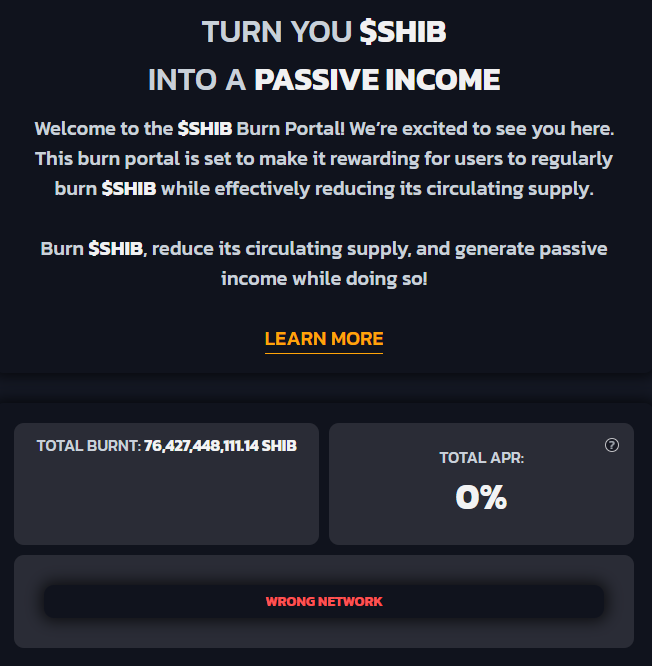
Since Shiba Inu\'s launch in 2020, more than 410 trillion SHIB tokens have been burned, representing about 41% of the token\'s total supply. As of February 2024, the total value of all burned SHIB is more than $3.9 billion.
Shiba Inu is the second most valuable meme coin by market cap, second only to Dogecoin. Launched only in 2020, the token has seen its popularity and value soar. SHIB is known for its high supply, which started at one quadrillion tokens. Over the years, that supply has gradually reduced due to the Shiba Inu coin burn. In three years, more than 410 trillion tokens have been burnt. However, there is still a lot more burning left to do if the value of Shiba Inu is ever to reach $1 or even $0.01.
In this article, we discuss everything you need to know about the Shiba Inu coin burn rate and other details.
What does it mean when Shiba Inu is burned?
Shiba Inu coin burning describes how the supply of the token reduces. Coin burning is a common practice among several crypto projects that want to become deflationary. It is the process of removing tokens from circulation. In order to do this, the project usually has burner addresses where the coins cannot be retrieved. The burner addresses are also sometimes called dead wallets.
Unlike the regular wallets that people use to send and receive crypto assets, nobody knows the private key of a burn address. This means that any cryptocurrency that’s sent to a burn address is stuck there forever.
Anyone can burn a cryptocurrency by sending it to a burn address. But it is not something a regular holder would want to do because it means losing money. Most times, the project\'s developers decide to burn the token so that the supply can drop. For Shiba Inu, burning SHIB was a collective decision by the community and developers.
Several projects have initiated coin burning since it became popular in 2017. This includes Ethereum, BNB, Terra Classic, and many others. Still, Shiba Inu coin burning is one of the most popular in the crypto space.
Shibarium and automatic SHIB burns
Manually sending SHIB to the burn address is not the only way that the circulating supply of Shiba Inu is decreased. Shibarium, a layer 2 network for the Shiba Inu ecosystem launched in 2023, is another important piece of the puzzle when it comes to SHIB burns.
Each transaction made through Shibarium incurs the base fee and the priority fee. 70% of the base fee is burned, and 30% is reserved for maintaining the network. Meanwhile, the priority fee is paid to the validator in full. The burn part of the fees accumulate in BONE (Shibarium\'s native digital asset), and once $25,000 worth of BONE is accumulated in the burn contract, they are transferred to Ethereum\'s L1, where they are automatically swapped for SHIB and burned.

SHIB token burns in February 2024. Source
Many users believe that Shibarium will become the main deflationary tool for Shiba Inu in the future, facilitating a drastic reduction in circulating coins that could be a major price catalyst. So far, Shibarium-related burns have been pretty small and didn\'t really have any impact on SHIB through deflationary mechanics. It is worth noting, however, that the amount of SHIB burnt via Shibarium is directly related to the number of transactions that are carried out through the L2 network. If Shiba Inu\'s apps become more popular in the future, we could easily see the burn rate increase drastically over time.
Why does Shiba Inu have coin burning?
The Shiba Inu coin-burning mechanism exists because of its supply at launch. Unlike many other crypto assets, whose circulating supply gradually increases through mining or staking, Shiba Inu was launched with an initial supply of one quadrillion tokens. The large supply meant the nominal price of each SHIB token was very low, which helped the project attract investors as the coin appeared to be “cheap.”
However, people who buy coins because they have a “cheap” price typically fail to consider market capitalization and have unrealistic expectations for how high the price of the token could go.
For instance, if SHIB reached a price of $1 at the current supply, its market cap would be over $580 trillion, more than the combined GDP of all the world’s countries. This will obviously not happen—the only way 1 SHIB could be worth $1 is if the supply of the token is reduced drastically.
It’s worth keeping in mind that burning tokens alone will not necessarily increase the value of the coin. However, if burning is accompanied by market demand for buying, it can have a positive impact on the price.
When did Shiba Inu start coin burning?
The token burn was not initially included in the Shiba Inu whitepaper, WoofPaper. This means it was not something that was planned from the very beginning. The first major Shiba Inu burn happened in June 2021 when Vitalik Buterin, who was gifted a large amount of SHIB when the token launched, burned 41% of the Shiba Inu supply.
Of the one quadrillion token created, Buterin got 50% as a gift from the Shiba Inu creator, Ryoshi. He sold about 9% to raise money for a fund tackling the COVID pandemic in India and then sent the rest to a dead wallet. That move alone dropped Shiba Inu circulating supply by almost half, and it also made the token more popular.

The Shiba Inu burn portal allows users to burn their SHIB in exchange for passive income.
Since then, the Shiba Inu community has been particular about SHIB burning. On April 23, 2022, the developers of Shiba Inu finally launched the Shib burn portal. However, there is still no Shiba Inu coin burn scheduled, which means that the amount of Shiba Inu burned within a month continues to vary.
How Many Shiba Inu Coins have been burned so far?
410,708,582,597,839 tokens have been burned so far. Most of these are due to Buterin burning 41% of the supply. But there have also been a lot of community burns – with over 180 billion SHIB burned – and Shibarium-related burns. The burns happen through different initiatives. For example, Bigger Entertainment, a crypto record label, burned over one billion SHIB through various efforts, including the SHIB Burner playlist. The record label has now left the Shiba Inu ecosystem.
But there are still other projects, such as NFT games, using the concept of Play to burn to reduce the supply of SHIB. A popular one is the Brick Burner mobile game by Travis Johnson. The game uses its ad revenue to burn SHIB tokens and has now burned more than 2.5 billion SHIB. Other efforts happen within the community and even outside. While not all those who promise to burn SHIB do, the community effort to burn SHIB is intense. The last significant Shiba Inu coin burn today happened just 8 hours ago and involved the burning of 32,406,486 SHIB.
Shiba Inu burn addresses
There are three main addresses used for burning SHIB tokens:
Caution: Any tokens sent to these addresses will be lost permanently.
- Burn Address 1 (used by Vitalik Buterin to burn his SHIB)
- Burn Address 2 (also used by the Shiba Inu team for ShibaSwap listings)
- Burn Address 3 (this address is sometimes called the Black Hole)
The Shiba Inu supply distribution at the time of writing is as follows:
| Circulating SHIB | Staked SHIB | Burned SHIB |
| 581,444,304,775,602 | 9,524,667,039,352 | 410,708,582,597,839 |

The bottom line
Overall, burning tokens can be a beneficial strategy for cryptocurrency projects. It can help to reduce the supply of tokens, increase the demand for tokens, show that the development team is committed to the project, reduce volatility, increase stability, and improve security. To this end, the Shiba Inu team has introduced several different burning measures designed to reduce the circulating supply of SHIB. So far, over 410 trillion of the starting 1 quadrillion tokens have been burned.
Whether the burning efforts will be enough to push the price higher, potentially leading to SHIB reaching 1 cent, remains to be seen.
